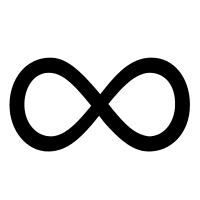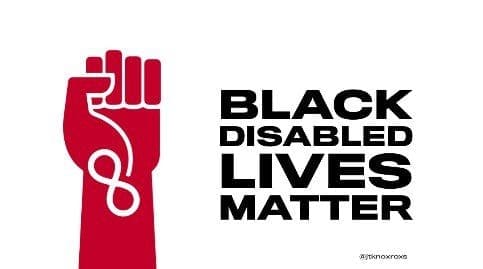Honoring Disability Pride Month
 July is Disability Pride Month. As a Therapist at Council for Relationships, and a lifelong Person with a Disability, I’d like to share with you what I feel pride about, as a Person with a Disability, and why terms matter. Disability does not discriminate, which means that Disability Culture includes all other human cultures. Disability also predates humanity. Neanderthals survived and thrived with disabilities. That makes Disability Culture the oldest and most encompassing culture in the pantheon of humanity.
July is Disability Pride Month. As a Therapist at Council for Relationships, and a lifelong Person with a Disability, I’d like to share with you what I feel pride about, as a Person with a Disability, and why terms matter. Disability does not discriminate, which means that Disability Culture includes all other human cultures. Disability also predates humanity. Neanderthals survived and thrived with disabilities. That makes Disability Culture the oldest and most encompassing culture in the pantheon of humanity.
We define culture as a “shared lived experience.” It is the way with which we move through the world, and the way that able-bodied society treats us. There is no one way to live with a Disability, and no one has the right to claim to have the “authentic Disability Experience.” This is why no one person can represent all of our experiences. Disability Culture represents many different subcultures with their own cultural mores, terms, art, and experiences. This diversity and complexity adds to our overall culture, because there are always new things to discover and learn. This does not mean that we don’t need a reckoning when it comes to racism, sexism, homophobia, and all other forms of bias within our community. We are not immune to prejudice within our own ranks.
The prospect of disability is terrifying to people, and so society has organized itself to reduce its contact with the subject as much as possible, and so People with Disabilities remain literally out of sight and out of mind. We are the largest minority in the US, and yet we are often an afterthought, if we are considered at all. We are often not adequately planned for in disaster management or public health. This costs us our lives. The desire to erase disability from humanity’s rolls not only costs lives today but robs all people of a true accounting of humanity’s history. Many of our Founding Fathers had disabilities. Our history is filled with figures who accomplished amazing feats, not in spite of their disabilities, but because of what the experience taught them. Eleanor Roosevelt wrote that when Franklin D. Roosevelt was told about Pearl Harbor, people were frantically running around his office. Roosevelt, however, had a look of calm resolve. She wrote she saw that expression one other time, when the Doctors told him that he had polio and would never walk again. We have only heard half the story if we don’t include the experience of disability. In fact, many revolutions in thought, or art, or technology have invariably come from someone who was neuroatypical.
Some of my fellow Americans might see it as progress if the future was devoid of People with Disabilities. The lack of People with Disabilities in science fiction demonstrates this idea. If that day were to come to fruition, the world would weep for a tribe of humanity would be lost. We are humanity’s heart and its spine; the wellspring of ingenuity and adaption. We don’t want to be put on a pedestal or made invisible. We want to come home. We want to be seen for who we are, and not for what we are not. Disability is called “The Last Minority.” For People with Disabilities to come home and become full participants, society will physically have to transform itself.
Within every marginalized population, there is a subgroup within it, of People with Disabilities who are the most marginalized and most vulnerable. Half of the deaths from COVID are among the Elderly and Disabled in institutions and nursing homes. Seven in ten people killed by police have at least one disability. In order to fully understand the problem of racism in America, we must look at the complexities that come from the intersection of racism, ableism, homophobia, xenophobia, sexism, and all the other forms of institutional bias. The insidious nature of ableism is that people do not need to feel malice in their hearts, to be a part of the structure of institutional ableism. We are all living with its legacy. The thing about institutional bias is that the tentacles of intolerance can ensnare our souls, because society was set up to segregate long before we all arrived on the scene. It is maintained by the way we organize our public spaces and design our transportation networks. Our health system makes decisions every day, not based on sound scientific evidence, but outmoded ideas about the quality of life of those of us who live with Disabilities. None of this requires an actor with malice in their hearts. The gears and levers of our society take care of that. The result is that the country I love with all my heart remains an inhospitable wilderness. The language that my fellow Americans use, and the physical barriers that society erects, send those with Disabilities the same message, “We are not wanted, we do not matter.” I encourage you to check out this link, Disability 101. This website is a great resource about the history and experience of Disabled Black People in America.
In celebration of Disability Pride Month, I’d like to share how some terminology and statements are experienced in the disability community.
Positive Language: The correct term is Disabled Person, or Person with a Disability. You have never heard me refer to myself as anything else. When referring to a Deaf or Blind person, Deaf and Blind should always be capitalized. When referring to Deaf or Blind culture, Deaf and Blind should always be capitalized. Capitalization is very important, for our dignity and humanity has been denied for too long.
Negative Language:
- Handicapped: comes from “cap in hand” refers to Disabled People as beggars.
- Special needs: should only be applied to a child in an educational context, and even then its iffy. As an adult, when I am referred to by this term, they are saying “You’re not a man”.
- Differently Abled, range of abilities. These terms are very offensive to People with Disabilities, because they are the terms we are told when we are denied housing and jobs we are qualified for. I specifically became a social worker, because social workers have always been the enemy of people with disabilities. Even though I am a social worker, I must prove every year that I have a disability, because social workers still say I’m unemployable, and if I have a job, I can’t have a disability. The greatest challenge is dealing with people who believe they are “woke”, who are ableist, they are the most intransigent. This is why “differently abled” is triggering to people with disabilities. Whenever this term is used it makes me physically feel ill.
- You’re an inspiration: When people tell me that I am an inspiration, I take it in the spirit with which it is meant, but it makes me sad. The idea of the inspirational figure goes back to “Tiny Tim” – no literary character, save Captain Ahab has done more to harm people with disabilities. The term inspiration is used as a place holder because we as a society have not developed a language to talk about disability, so everything we do is an inspiration. Also, we inspire normates because able-bodied society puts so many obstacles in our place, that it’s an inspiration that we make it through a day. I would rather able-bodied people remove the barriers, than call me an inspiration. When I spoke to a crowd of disability advocates. I finished by saying, “Can they just stop calling us inspirations?” the crowd erupted. The inspirational figure is also a way to keep us separate from you. On a pedestal is not equal. The idea of inspiration divides you from me.
Positive Symbols:
Infinity Loop: this is equivalent to the = sign in the LGBTQI+ community. It stands for interconnected/ interdependence. We reject the idea of “special needs” everyone has needs. One person’s strengths buttress the next person’s weaknesses and vice versa. We reject the idea of independence for interdependence.
Disabled Black Lives Matter. Their symbol is a Black Fist with the Infinity Symbol. Symbolizing that they claim their place in the Civil Rights Movement and the Disability Rights Movement
DBLM has decided that the correct terminology is Disabled Black Man, Disabled Black Person, and Disabled Black Woman. All capitalized.
 Rainbow Flag with Disability Symbol: This is the symbol of the Disabled LGBTQI+ community, but it has evolved into the Disability Pride Flag. “Beauty is in the rainbow” The idea that we are all part of a spectrum, a continuum. Also, the trans and intersexed communities have always been on the frontlines of the DRM. We fight for the right to go to the bathroom together.
Rainbow Flag with Disability Symbol: This is the symbol of the Disabled LGBTQI+ community, but it has evolved into the Disability Pride Flag. “Beauty is in the rainbow” The idea that we are all part of a spectrum, a continuum. Also, the trans and intersexed communities have always been on the frontlines of the DRM. We fight for the right to go to the bathroom together.
I love this country with every fiber of my being, but the cities and towns that I love remain inhospitable wilderness. I see signs that say “Able-bodied only” everywhere I go. These signs can’t be seen by my able-bodied friends and family. That is the power of institutionalized bias. Only the victims see the signs.
In celebration of Disability Pride Month, I encourage you to check out Dancing with Disability, the Heart to Heart Orchestra, the Disability History Museum, or the Paralympics. Watch this compelling dance “Gravity” featuring a Person with a Disability.
I dream that one day someone like me might be seen, and appreciated for who they are, not what they lack, that all people might have avenues for their aptitudes, and that America might be shelter from the storm for us all.
Matthew Purinton, LCSW is a staff therapist at our University City office; he currently sees clients via online therapy. To set up an appointment, you can reach him at mpurinton@councilforrelationships.org or 215-382-6680 ext. 3135



